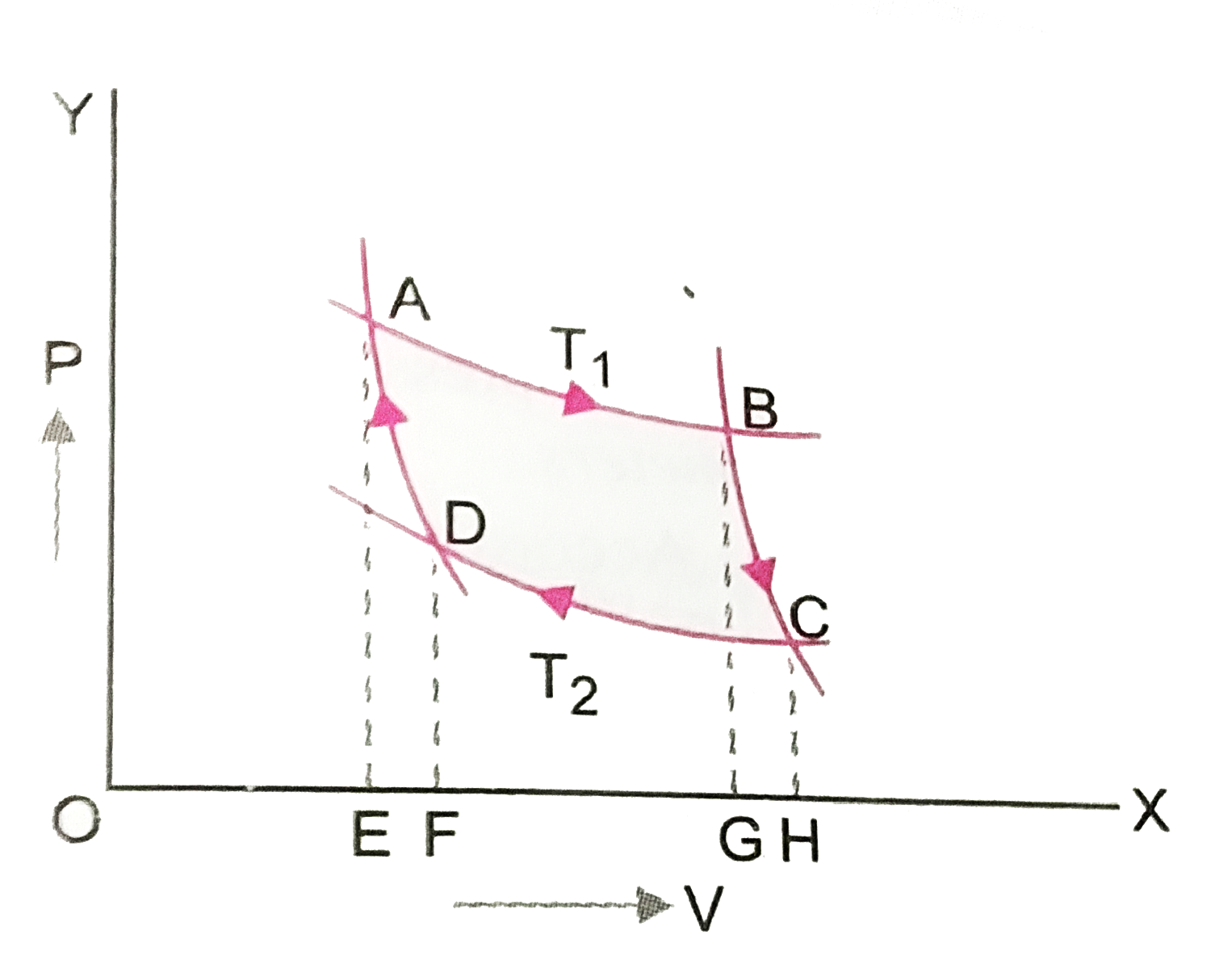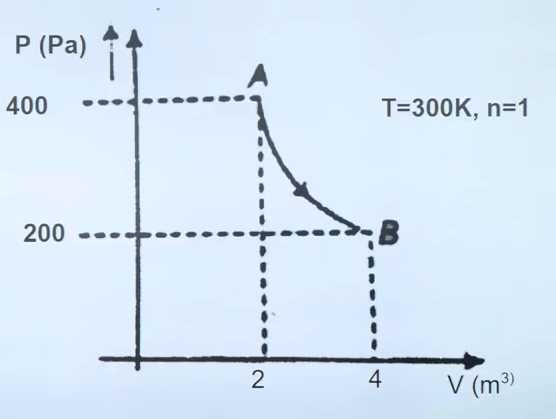(Figure) shows that two P−V curves AB and BC for a gas: one is for isothermal process and other is for adiabatic process.
(i) Which curve denotes which change and why?
(ii) How much work will be done by the gas in change AB? Will the internal energy of gas increase or decrease? How much heat will the gas give or take?
(iii) Discuss all the above things in change BC.
Video Solution
Text Solution
(i) As is clear fron (figure), slope of curve AB is less than the slope of curve BC. Therefore, AB represents an adiabatic curve, BC involves change in temperature from T1to(T2.
(ii) Work done by the gas in change AB=areaABGEA. It is positive work
As temperature remains constant in an isothermal change, internal energy U=constantdU=0.

From first law of thermodynamics,
dQ=dU+dW=0+dW=dW
=areaABGEA
The system will take this much of heat
(iii) Work done by the gas in change BC=areaBCHGB. It is positive work.
As temp. falls from T1toT2 internal energy decreases.
As the change is adiabatic, dQ=0. Heat is neither given not taken.
|
Topper's Solved these Questions
- THERMODYNAMICSBook:PRADEEPChapter:THERMODYNAMICSExercise:Very short answer questions(NCERT)
Explore 5 Videos
- THERMODYNAMICSBook:PRADEEPChapter:THERMODYNAMICSExercise:Short answer questions(NCERT)
Explore 6 Videos
- THERMODYNAMICSBook:PRADEEPChapter:THERMODYNAMICSExercise:Long answer questions
Explore 11 Videos
- SYSTEMS OF PARTICLES AND ROTATIONAL MOTIONBook:PRADEEPChapter:SYSTEMS OF PARTICLES AND ROTATIONAL MOTIONExercise:Assertion- Reason Type questions
Explore 20 Videos
- WORK, ENERGY AND POWERBook:PRADEEPChapter:WORK, ENERGY AND POWERExercise:Assertion-Reason Type Questions
Explore 24 Videos
Similar Questions
Knowledge Check
In an adiabatic process 90 J of work is done on the gas. The change in internal energy of the gas is
A−90jB+90jC0 jDDepends on initial temperatureThe internal energy of an ideal gas increases during an isothermal process when the gas is
AExpanded by adding more molecules to itBExpanded by adding more heat to itCExpanded against zero pressureDCompressed by doing work on itChange in internal energy in an isothermal process for ideal gas is
AZeroB(+) veC(-) veDCannot be predicted
A gas is taken through an isothermal process as shown.Find the work done by the gas

View SolutionIn thermodynamic process, 200 Joules of heat is given to a gas and 100 Joules of work is also done on it. The change in internal energy of the gas is
View SolutionIn an isothermal expansion change in internal energy and work done by the gas are respectively
View SolutionAn ideal gas with adiabatic exponent (γ=1.5) undergoes a process in which work done by the gas is same as increase in internal energy of the gas. Here R is gas constant. The molar heat capacity C of gas for the process is:
View SolutionIn an isothermal expansion change in internal energy and work done by the gas are respectively
View Solution


